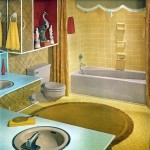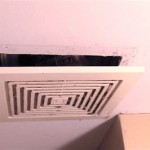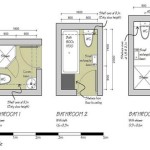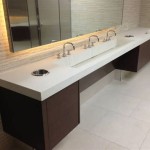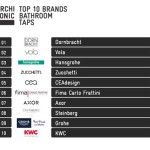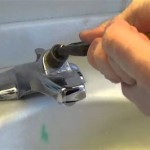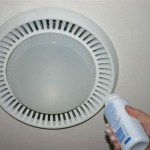How Much Are Custom Bathroom Vanities?
The cost of custom bathroom vanities is a nuanced topic, heavily influenced by a range of factors that span material choices, size considerations, design complexity, and installation requirements. Understanding these factors is crucial for anyone considering a custom vanity project, as it allows for a more informed budgeting process and a clearer expectation of the potential investment involved.
Unlike pre-fabricated vanities available at standard retailers, custom vanities are tailored to specific needs and preferences. This inherently involves a higher price point compared to mass-produced options. However, the advantages of customization often outweigh the cost for individuals seeking a unique aesthetic, optimizing space utilization, or desiring specific functionality not found in readily available products.
This article aims to provide a comprehensive overview of the various elements contributing to the overall cost of a custom bathroom vanity. By exploring these factors in detail, readers can gain a more accurate understanding of the financial commitment required for their particular project and make informed decisions about design choices and material selections to align with their budgetary constraints.
Material Selection: The Foundation of Cost
The selection of materials is arguably the most significant factor affecting the cost of a custom bathroom vanity. Different materials possess varying price points, durability characteristics, and aesthetic qualities. The choice of material can dramatically influence the overall cost, longevity, and visual appeal of the finished vanity.
Solid wood is a popular choice for custom bathroom vanities due to its natural beauty and durability. However, the type of wood significantly impacts the cost. Hardwoods like maple, cherry, and oak tend to be more expensive than softwoods like pine. Additionally, the grading and quality of the wood influence the price, with fewer knots and imperfections generally commanding a higher cost. Solid wood offers excellent stability and resistance to moisture when properly sealed and maintained, making it a long-lasting option, but its susceptibility to warping and cracking in humid environments should be considered.
Plywood, particularly marine-grade plywood, offers a more affordable alternative to solid wood. It consists of multiple layers of wood veneer glued together, providing excellent strength and dimensional stability. Marine-grade plywood is specifically designed to withstand moisture exposure, making it a suitable choice for bathroom applications. While not as visually appealing as solid wood in its raw form, plywood can be veneered with a variety of wood species to achieve a desired aesthetic at a lower cost.
Medium-density fiberboard (MDF) is another cost-effective option for vanity construction. MDF is an engineered wood product made from wood fibers combined with resin and compressed under high pressure. It provides a smooth, uniform surface that is ideal for painting or applying laminate finishes. However, MDF is more susceptible to moisture damage than solid wood or plywood and should be carefully sealed to prevent swelling and warping. It is generally best suited for vanities in well-ventilated bathrooms with low humidity levels.
Beyond wood-based materials, countertops also play a significant role in determining the vanity's overall cost. Granite, marble, and quartz are popular choices for their durability, heat resistance, and aesthetic appeal. However, these materials can be considerably more expensive than laminate or solid surface countertops. The thickness, edge profile, and any custom fabrication required for the countertop will further influence the price.
The hardware selected for the vanity, including knobs, pulls, hinges, and drawer slides, also contributes to the overall material cost. High-end hardware made from solid brass or stainless steel can be significantly more expensive than standard options. Choosing high-quality hardware is crucial for ensuring smooth operation and longevity of the vanity components.
Design Complexity and Customization
The complexity of the vanity's design is a major determinant of the overall cost. Simple, minimalist designs with clean lines and straightforward construction techniques are generally less expensive to fabricate than intricate designs with elaborate carvings, custom moldings, or unique storage solutions. The level of customization desired by the client directly impacts the labor hours required for fabrication and installation, thereby affecting the final price.
Vanities with numerous drawers, shelves, or built-in organizers require more time and materials to construct than those with a simple cabinet design. Custom-built drawers with dovetail joints or soft-close mechanisms add to the cost. Similarly, incorporating specialized features like pull-out hampers, electrical outlets, or integrated lighting increases the complexity and expense of the project.
The size and dimensions of the vanity also play a crucial role in determining the cost. Larger vanities require more materials and labor to construct than smaller ones. Custom vanities designed to fit unconventional bathroom layouts or maximize space utilization in tight areas may require specialized planning and fabrication techniques, further increasing the cost.
The finish applied to the vanity also contributes to the overall cost. A simple painted finish is generally less expensive than a stained finish, which requires multiple coats and careful application to achieve a consistent color and grain enhancement. Applying specialized finishes like a distressed look or a high-gloss lacquer can further increase the finishing costs.
Custom design elements, such as integrating specific design motifs, matching existing architectural details, or incorporating unique materials, can significantly impact the cost of the vanity. These elements require specialized skills and attention to detail, which translate into higher labor costs. The more unique and personalized the design, the greater the investment required.
Labor and Installation Costs
Labor costs represent a significant portion of the overall expense of a custom bathroom vanity project. The hourly rate charged by carpenters, cabinet makers, and installers varies depending on their experience, skill level, and geographic location. Complex designs and intricate installations will naturally require more labor hours, resulting in higher overall costs.
The fabrication process itself involves various stages, including design consultation, material selection, cutting, assembling, sanding, finishing, and quality control. Each of these steps requires skilled labor and specialized equipment. The more intricate the design, the more time and effort required for each stage of the fabrication process.
Installation costs also depend on the complexity of the project. A straightforward installation involving replacing an existing vanity with a similarly sized custom vanity will generally be less expensive than a more complex installation that requires modifications to plumbing, electrical wiring, or flooring. The removal and disposal of the old vanity also contribute to the overall installation cost.
Plumbing and electrical work are often necessary during a vanity installation, particularly if the new vanity has a different configuration than the previous one. Licensed plumbers and electricians must be hired to ensure that these tasks are performed safely and according to local building codes. The cost of plumbing and electrical work will vary depending on the extent of the modifications required.
Geographic location also plays a role in determining labor costs. Labor rates tend to be higher in urban areas with a higher cost of living compared to rural areas. Obtaining multiple quotes from different contractors is recommended to ensure that you are getting a competitive price for the installation services.
Permitting fees may be required for some vanity installations, particularly if they involve significant plumbing or electrical work. These fees vary depending on the municipality and the scope of the project. It is essential to check with the local building department to determine if any permits are required and to factor these costs into the overall budget.
In summary, the cost of a custom bathroom vanity is a composite of several factors. Careful consideration of material choices, design complexity, customization requests, and labor and installation costs is essential for accurately estimating the overall investment required. By understanding these variables, individuals can make informed decisions that align with their budgetary constraints and design aspirations.

Custom Bathroom Vanities Cabinets Any Size Several Secretbath

How Much Does Bathroom Vanity Installation Cost 2024

Buy Custom Bathroom Vanities At The Best Cliqstudios

How Much Do Custom Bathroom Vanities Cost

How Much Do Custom Bathroom Vanities Cost

Custom Vanity Bathroom Cabinetry Design Line Kitchens

2024 Vanity Installation Cost A Complete Guide

How Much Do Bathroom Cabinets Cost In 2024 Angi

Polaris Home Design Breaks Ground With Custom Bathroom Vanities

Bathroom Vanity Installation Cost 2024 Average S
Related Posts
